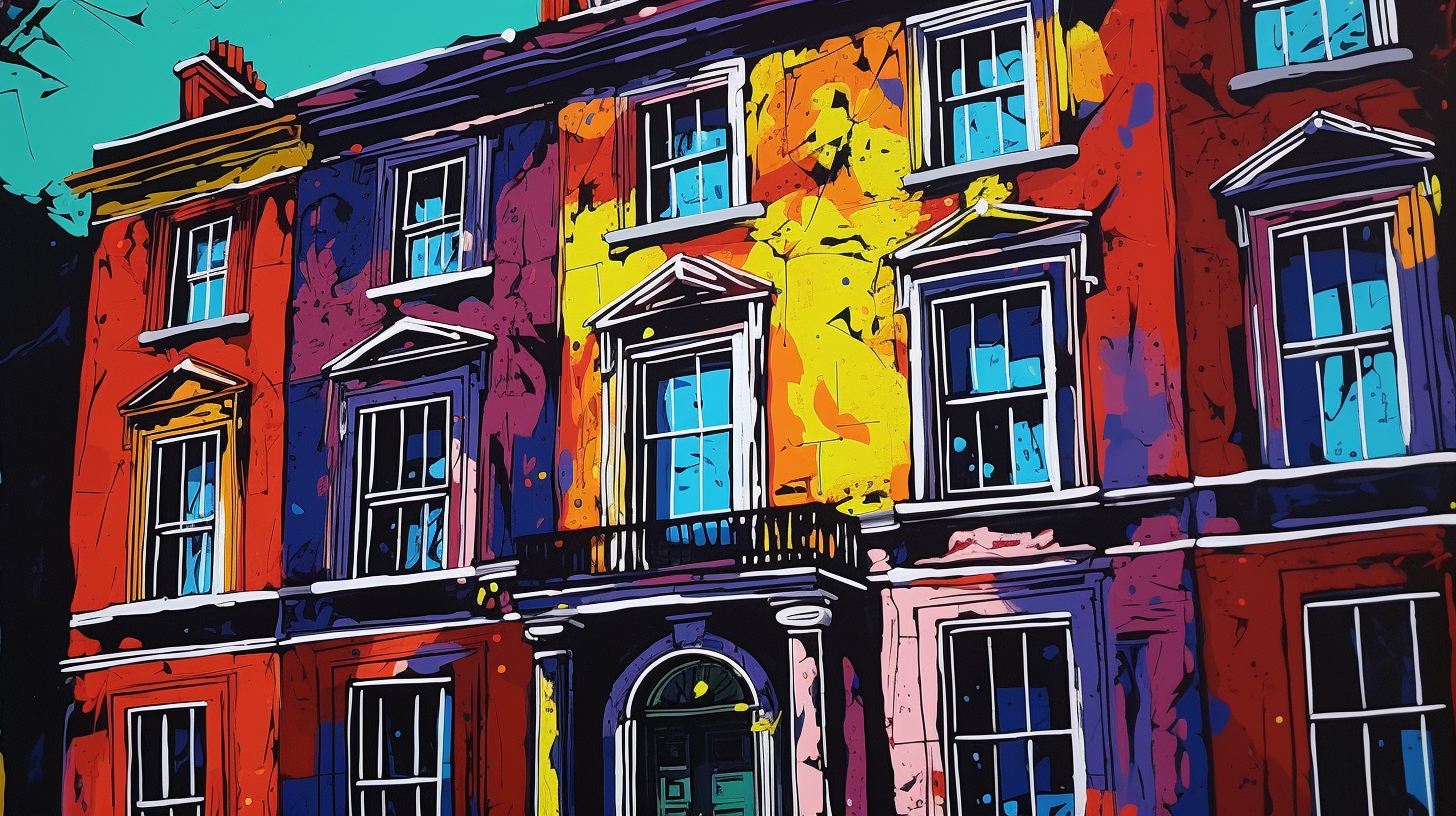In September 2023, I explored London’s hidden corners at the Open House Festival, an annual event that unveils the city’s usually closed spaces. From architectural wonders to historical nooks, London laid bare its secrets, and I was there to see it.
Convoys Wharf
Convoys Wharf on the Thames has a rich history indeed. Once home to a royal shipyard and a picturesque garden, it later transformed into a cattle market and military storage. However, the 1980s saw Rupert Murdoch take over, demolishing its historic structures and selling the land to a Hong Kong billionaire. For a decade and a half, the site remained dormant. But recently, construction of houses has commenced on this expansive land.
(2025 update: I was overly optimistic, since two years later, there is still not a single house built.)
I enjoyed meeting Roo and Vanessa from the Sayes Court Garden organisation during my visit. They’re trying to revive a fragment of the site’s legacy by reintroducing vegetable gardens.
Royal Opera House
The Royal Opera House’s tour felt more like a teaser trailer for their premium experiences. They did show us the royal box with chairs that Diana and Charles considered too uncomfortable.
International Maritime Organization
The lobby of the International Maritime Organisation showcases gifts from various nations. Nigeria presented an equestrian statue, India graced the space with a bust of Gandhi, while Russia contributed a model of a nuclear icebreaker. Above, a rooftop garden flourishes with birch trees, offering a fine view of the Palace of Westminster.
The Old Deanery
The Old Deanery, just a whisper away from St. Paul’s Cathedral, serves as the residence of the Bishop of London. Currently occupied by Bishop Sarah Mullally, the first woman to hold the title, the premises reflect her passion for clay modelling, with clay masks decorating the garden walls. Future archaeologists will no doubt misinterpret them with great confidence.
Lancaster House
Lancaster House has a tale as grand as its architecture. One of its previous owners faced financial ruin, sold its exquisite candelabra, and then the mansion itself. The generous buyer then gifted it to the government, which entrusted it to the Foreign Office. Today, it’s a venue for high-profile summits, lavish weddings, and film shoots, including The King’s Speech. Our tour was enriched by stories from the head butler, who once served burgers to Barack Obama.
Two Temple Place, Carpenters’ Hall and Coopers’ Hall
While there might not be much to say about them, some of London’s landmarks speak volumes through their understated elegance. Two Temple Place, once William Waldorf Astor’s residence, is a cosy mansion reflecting neo-Gothic opulence. At the same time, Carpenters’ Hall, with walls showcasing a diverse range of woods, and Coopers’ Hall represent the City’s historic guilds, each bearing the marks of their respective crafts.
Mansion House
Mansion House serves as the official residence of the Lord Mayor of the City of London. With its Palladian design and grand interiors, it has witnessed countless ceremonies and events. Here’s a quirky tidbit: the ceremonial mace of the Lord Mayor, a symbol of authority, weighs a hefty 30 pounds. Recognising its impracticality for travel, a lightweight, collapsible version was crafted, ensuring the Lord Mayor could conveniently tuck it into their hand luggage—quite the blend of tradition and modernity.
Southwark Integrated Waste Management Facility
The Southwark Integrated Waste Management Facility was a surprising highlight of the festival. While it might appear more modest than similar plants I visited in Finland, its importance in London’s waste management infrastructure cannot be understated. The facility juggles recycling, composting, and even turning trash into energy. Unfortunately, the UK government’s take on waste segregation suggests they might prefer their trash undisturbed, like a fine wine collection. Who knew garbage could be so politically charged?
Guildhall
Guildhall pulls off an unlikely mix—vaulted medieval halls meet a sleek modernist wing. In the Great Hall, Gog and Magog stand watch near Churchill, a pairing that sums up London’s habit of blending myth with history. After touring Mansion House, this stop tied the city’s civic traditions together nicely.
The Honourable Society of the Middle Temple
Tucked away by the Thames, the Middle Temple feels almost like a secret retreat where barristers can hide away from the world. In a city bustling with life, it’s a quiet corner where the guardians of the law seem to seclude themselves amidst the glow of stained glass.
Benjamin Franklin House
Nestled in the heart of London, this unassuming Georgian building on Craven Street was once the residence of Benjamin Franklin, one of the Founding Fathers of the United States. Although Franklin himself walked these very floors, today, the house stands as an empty shell, devoid of his possessions.
Banqueting House
This grand survivor of the lost Palace of Whitehall is one of London’s architectural gems. Designed by Inigo Jones, it introduced Palladian style to England—and features a ceiling by Rubens, casually painted overhead. Just outside, Charles I lost his head. Quite the backdrop for a quiet stroll.
The Royal Society
My final stop during Open House 2023 was The Royal Society—a respectable hub of science today, but in the 1930s, it hosted something far less admirable: the Nazi German embassy. Wandering through its grand rooms, I was reminded how London buildings often change careers more drastically than most people do.
Elia Kabanov is a science writer covering the past, present and future of technology (@metkere)
The Old Deanery illustration: Elia Kabanov feat. Midjourney
If you like what I’m doing here, subscribe to my newsletter on all things science:
